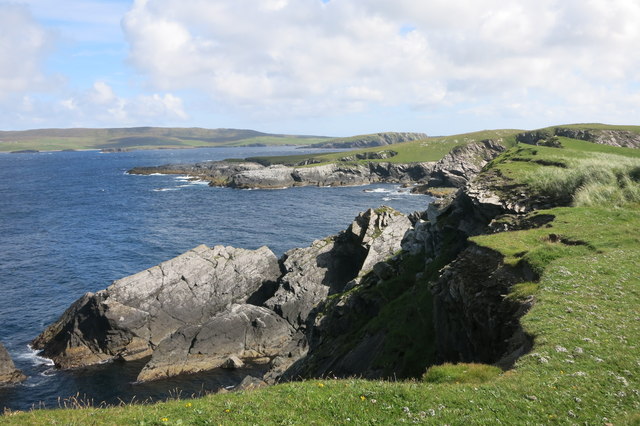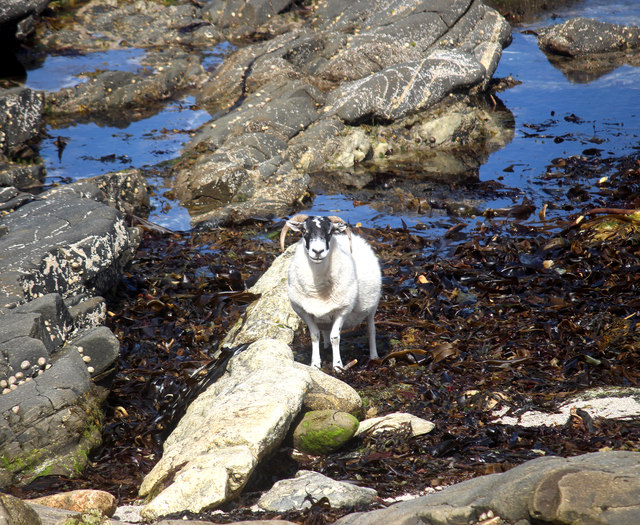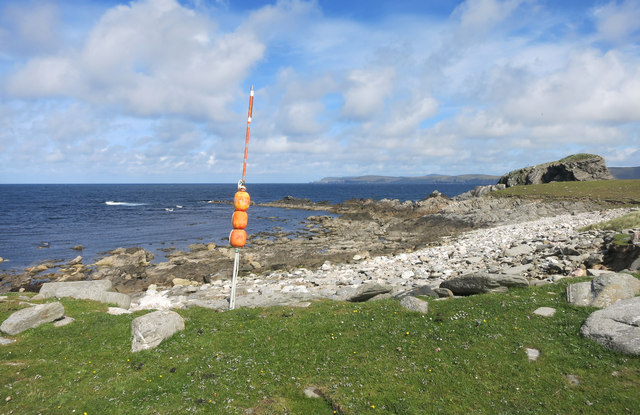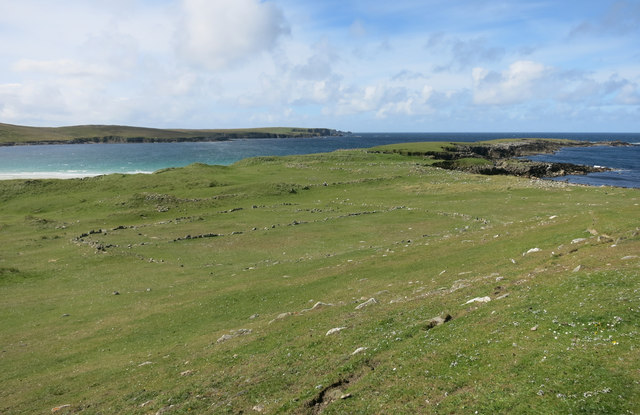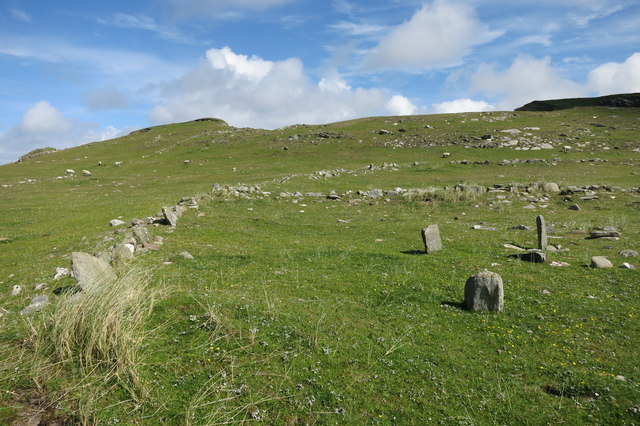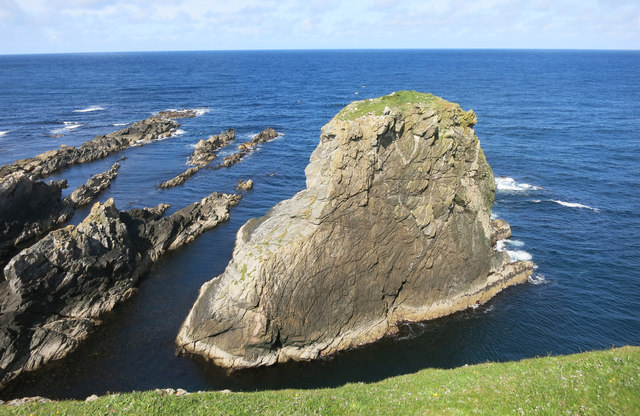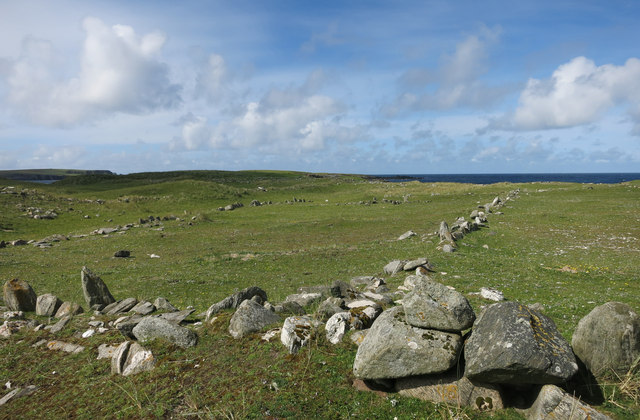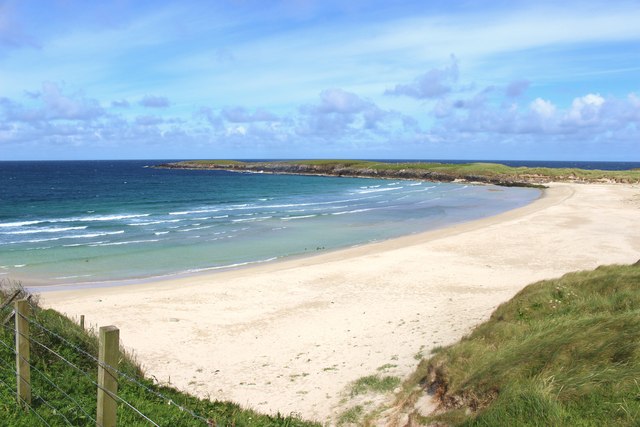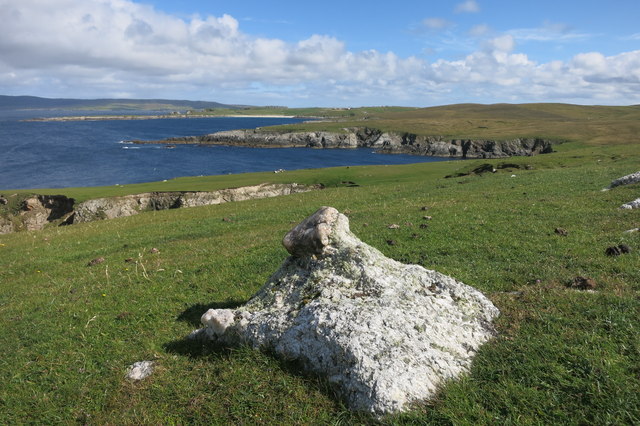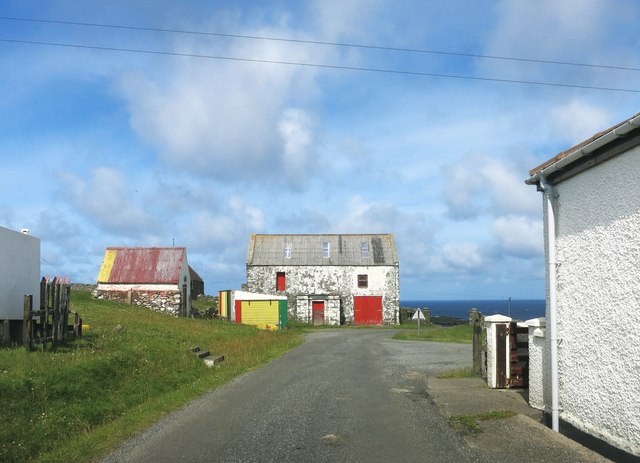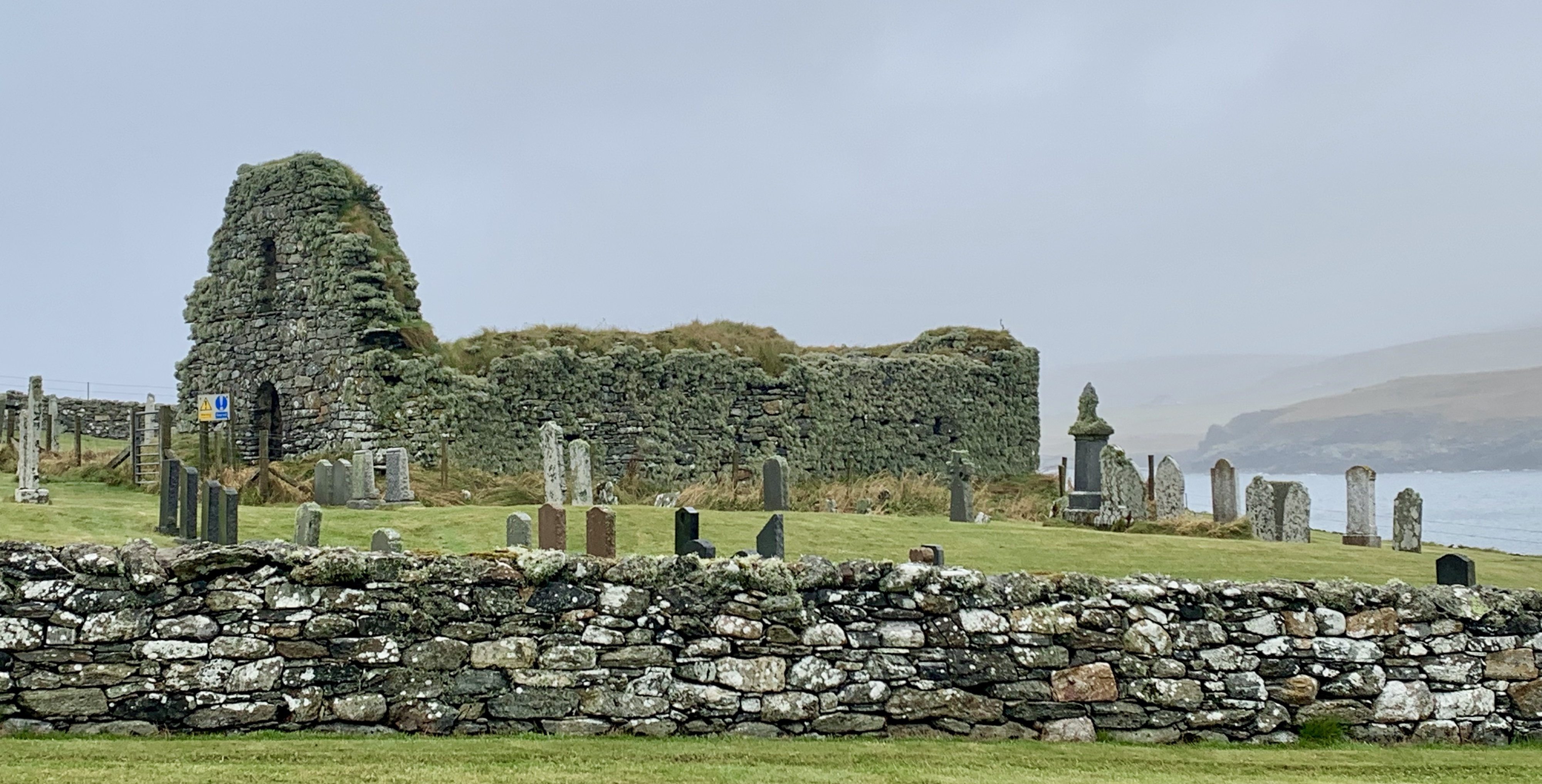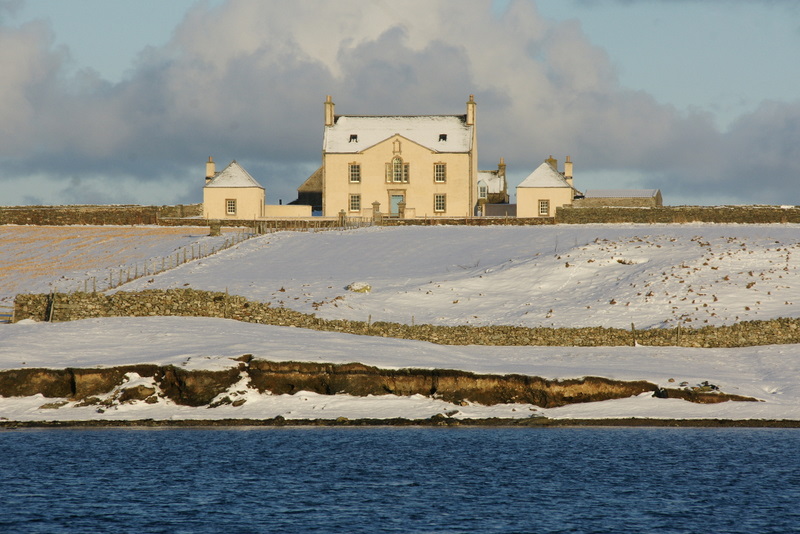Blue Geo
Coastal Feature, Headland, Point in Shetland
Scotland
Blue Geo
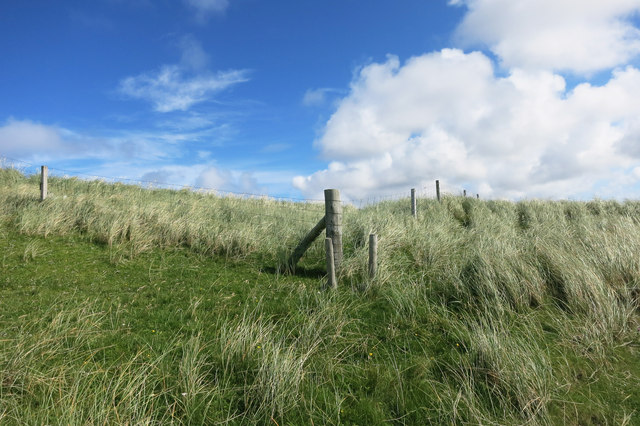
Blue Geo is a prominent coastal feature located in the Shetland Islands, an archipelago in Scotland, United Kingdom. It is specifically situated on the mainland, in the southern part of the island known as Mainland. Blue Geo is classified as a headland or a point, depending on the specific definition used.
This coastal feature is known for its stunning cliffs that rise dramatically from the North Sea, offering breathtaking views of the surrounding landscape. The cliffs are composed of rugged, weathered rocks, and their unique blue coloration gives Blue Geo its name.
Blue Geo is a popular destination for nature lovers, hikers, and photographers due to its striking beauty and diverse wildlife. The area is home to various seabird species, including puffins, guillemots, and razorbills, which nest in the cliffs during the breeding season. Visitors can often spot these birds soaring above the waves or perched on the rocky ledges.
Additionally, Blue Geo is renowned for its geological significance. The cliffs showcase a fascinating range of rock formations, including layers of sandstone, shale, and limestone. These formations provide valuable insights into the geological history of the Shetland Islands and contribute to ongoing scientific research in the field.
Access to Blue Geo is relatively easy, with a footpath leading from nearby settlements to the coastal feature. However, caution is advised when exploring the area, as the cliffs can be steep and unstable in certain sections.
Overall, Blue Geo is a captivating coastal feature that offers visitors a chance to immerse themselves in the natural beauty and geological wonders of the Shetland Islands.
If you have any feedback on the listing, please let us know in the comments section below.
Blue Geo Images
Images are sourced within 2km of 60.730701/-1.0384076 or Grid Reference HP5205. Thanks to Geograph Open Source API. All images are credited.



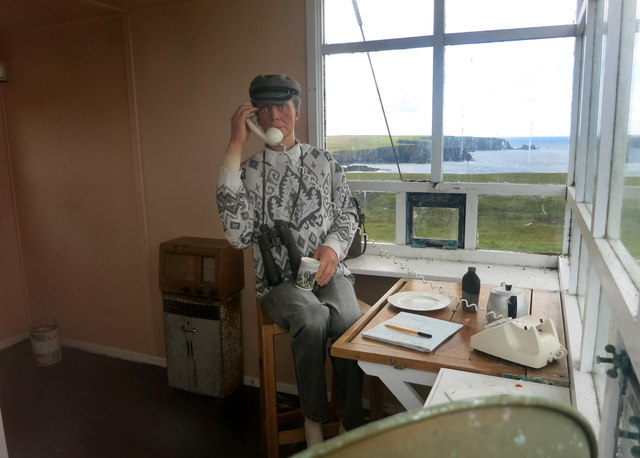
Blue Geo is located at Grid Ref: HP5205 (Lat: 60.730701, Lng: -1.0384076)
Unitary Authority: Shetland Islands
Police Authority: Highlands and Islands
What 3 Words
///tenders.deeds.melts. Near Gutcher, Shetland Islands
Nearby Locations
Related Wikis
Gloup
Note: Gloup is common in Scottish placenames referring to a sea jet. Gloup is a village in the far north of the island of Yell in the Shetland Islands...
Cullivoe
Cullivoe (Old Norse: Kollavágr - Bay of Kolli), is a village on Yell in the Shetland Islands. It is in the north east of the island, near Bluemull Sound...
Brough Holm
Brough Holm is a small island off Unst, in the North Isles of Shetland. It is off Westing, which as the name implies is on the west coast of Unst. The...
Society of Our Lady of the Isles
The Society of Our Lady of the Isles (SOLI) is a small Anglican religious order for women, founded in the late 20th century. It is located in Shetland...
St Olaf's Church, Unst
St Olaf's Church, Unst is a ruined medieval church located on the island of Unst, in Shetland, Scotland, UK. The church was built in the Celtic style,...
Gloup Holm
Gloup Holm is an islet in the Shetland Islands, lying to the north of Yell. == Geography and geology == Gloup Holm is near to the part of Yell called North...
Bluemull Sound
Bluemull Sound is the strait between Unst and Yell in Shetland's North Isles. A ferry service crosses it regularly. Cullivoe is on the Yell side, and the...
Belmont House, Shetland
Belmont House is a neo classical Georgian Country House Estate on the island of Unst, the most northerly of the Shetland Islands, [United Kingdom] and...
Nearby Amenities
Located within 500m of 60.730701,-1.0384076Have you been to Blue Geo?
Leave your review of Blue Geo below (or comments, questions and feedback).
